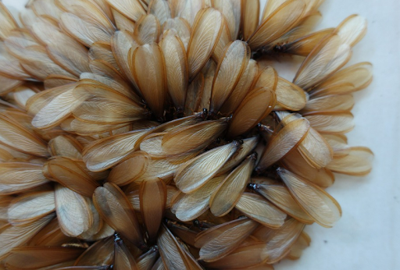
Termites, those tiny architects of destruction, are the ultimate home invaders. They're masters of disguise, quietly munching their way through the heart of your property while you're blissfully unaware. But fear not! With a little knowledge and a proactive approach, you can transform your home into a termite-free fortress.
Understanding Termites
Termites aren't just mindless eaters; they're highly organized social insects with a complex community structure. Imagine them as a tiny underground city, complete with workers, soldiers, and a queen who's all about baby-making. These critters are more sophisticated than you might think.
Termite colonies are divided into distinct castes, each with a specialized role. The queen is the heart of the colony, dedicated to reproduction. Her sole purpose is to lay eggs, ensuring the colony's growth. The king's role is primarily to mate with the queen, but he also produces pheromones that regulate colony activity.
Workers are the backbone of the colony, handling everything from building tunnels to caring for the young. Soldiers, equipped with powerful mandibles, are the colony's protectors. And then there are the nymphs, which are like termite teenagers, transitioning from workers to soldiers or reproductive individuals.
Termite Behavior: A Closer Look
Termites aren’t picky eaters. While wood is their primary menu item, they also have a taste for paper, fabric, and even some types of plastic. It's like having tiny, hungry roommates with terrible table manners. And when they decide to throw a party, it's called a swarm. Thousands of winged termites take to the air, looking for new places to set up shop. Not exactly the kind of housewarming you want.
Termite swarms typically occur during specific times of the year, depending on the species and local climate. These winged termites, known as alates, leave the colony in search of mates and new nesting sites. Once they find a suitable location, they shed their wings and establish a new colony.
The Impact of Environment
Climate change is throwing a curveball at us all, and termites are no exception. Warmer temperatures and increased rainfall create ideal conditions for termite populations to thrive. As a result, regions previously considered low-risk for termite infestations may now face increased challenges.
Urbanization also plays a role in termite activity. The removal of trees and the construction of buildings can disrupt termite habitats, forcing them to adapt to new environments. Additionally, the abundance of wood used in construction provides a readily available food source for these pests.
Landscaping: A Double-Edged Sword
Your backyard can be either a termite haven or a hostile territory. Overwatering plants, allowing mulch to accumulate, or neglecting to remove decaying wood can create a moist, inviting environment for termites. On the other hand, certain plants, such as cedar and eucalyptus, are believed to have termite-repellent properties.
Creating a dry, well-maintained landscape can help deter termites. Regular pruning, removing dead plant matter, and proper drainage can go a long way in protecting your home.
Protecting Your Investment
Buying a home is exciting, but don't let the thrill blind you to potential termite trouble. A termite inspection is essential before purchasing a property. This professional assessment can identify existing infestations and assess the risk of future problems.
Termite disclosure laws vary by region, so it's important to understand your local regulations. These laws typically require sellers to disclose known termite infestations or previous termite treatment efforts.
Once you own your home, regular inspections are crucial. Keep an eye out for signs of termite activity, such as mud tubes, hollow-sounding wood, or termite swarms. Early detection is key to preventing extensive damage.
Dispelling the Myths
There are numerous myths surrounding termites. One common misconception is that termites only infest old or poorly maintained homes. In reality, termites can infest any type of home, regardless of age or condition. Another myth is that termites are only active during warm weather. While termite activity may be more noticeable in warmer months, these pests are active year-round.
DIY treatments can be tempting, but they often fall short in eliminating a termite infestation. Professional pest control services have the expertise and tools to effectively target and eradicate these pests.
Building a Termite-Resistant Fortress
Creating a termite-resistant home involves a combination of prevention and professional treatment. Sealing cracks in your foundation, maintaining proper ventilation, and eliminating moisture sources can deter termites. Regular inspections, both DIY and professional, are essential for early detection.
When faced with a termite infestation, contact a qualified pest control professional. They can assess the extent of the problem and recommend appropriate treatment options.
Remember, your home is a significant investment. Protecting it from termites requires vigilance and proactive measures. By understanding your enemy and taking the necessary steps, you can create a termite-free sanctuary.


(0) comments
We welcome your comments
Log In
Post a comment as Guest
Keep it Clean. Please avoid obscene, vulgar, lewd, racist or sexually-oriented language.
PLEASE TURN OFF YOUR CAPS LOCK.
Don't Threaten. Threats of harming another person will not be tolerated.
Be Truthful. Don't knowingly lie about anyone or anything.
Be Nice. No racism, sexism or any sort of -ism that is degrading to another person.
Be Proactive. Use the 'Report' link on each comment to let us know of abusive posts.
Share with Us. We'd love to hear eyewitness accounts, the history behind an article.